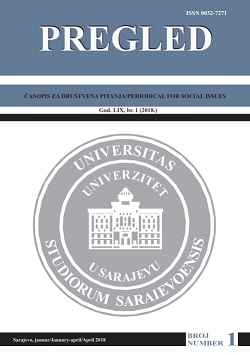Kultura u aktuelnim politikama Europske unije
Culture in the Current Policies of the European Union
Author(s): Edin VeladžićSubject(s): Civil Society, International relations/trade, Sociology of Culture, EU-Accession / EU-DEvelopment, Globalization
Published by: Univerzitet u Sarajevu
Keywords: European Union; integration; culture; cultural policy; cultural and creative industries; cultural rights; European agenda for culture; macro regions;
Summary/Abstract: The current cultural policy of the European Union is based on several key documents, and one of the most important is the European agenda for culture in the globalized world. That strategic document represents a turning point of the Union's intensified engagement in the field of culture. With three interrelated sets of goals, the Agenda has pursued a strategic direction of action in this area and the further development of EU cultural policies. The first set of objectives relates to the promotion of cultural diversity and intercultural dialogue, the second to the promotion of culture as a catalyst for creativity within the Lisbon Strategy for Growth and Employment and the third to promoting culture as a vital element in the international relations of the Union. The culture has also occupied an important place in the EU enlargement policies, and an important dimension of current Union policies is cultural rights. In the EU institutions of culture are increasingly seen as an instrument in the fight against poverty. In its new approaches, the Union places a special focus on access to culture and participation in cultural events. All previous studies have shown that the area of culture shows an impressive growth potential. And the latest research done for the Union's needs has confirmed a significant share of culture in the EU economy. According to these analyzes, the share of cultural and creative industries in the overall GDP of the Union is 4.5%, while the percentage of employees in that sector reaches 3.5% at Union level. One of the relatively recent developments in EU policies is the establishment of macro regions. So far, three strategies have been adopted for the Danube, Baltic and Adriatic-Ionian regions, and culture has found a place in each of them. It is evident that today we see the European Union‟s cultural policy in different areas, not necessarily in the field of culture and heritage. In this respect, it is worthwhile to set out rules related to tax policy, regulation of intellectual property, copyright and related rights, the movement of cultural goods and regulations on the protection of competition.
Journal: PREGLED - časopis za društvena pitanja
- Issue Year: LIX/2018
- Issue No: 1
- Page Range: 83-102
- Page Count: 20
- Language: Bosnian

